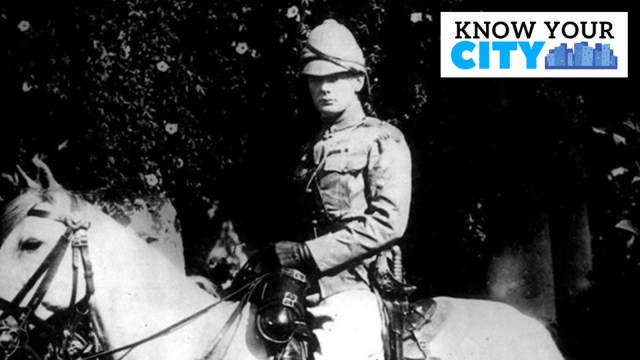Know Your City: When a sleepy cantonment town hosted future prime minister of Britain
Winston Churchill was fairly low on the military pecking order when he was posted in Bangalore in 1895.
 The young Winston Churchill would grow up to be a man by turns admired and hated across the world, depending on where one stands—but never ignored.
The young Winston Churchill would grow up to be a man by turns admired and hated across the world, depending on where one stands—but never ignored. The Bangalore of the late 1800s was no stranger to eminent people from across the British empire. While viceroys and generals came calling, a royal visit by Prince Albert Victor in 1889 saw the inauguration of the famous Glass House in Lalbagh.
But the young army officer posted in 1895 was not yet a household name in the city. The young Winston Churchill would grow up to be a man by turns admired and hated across the world, depending on where one stands—but never ignored.
At the outset, Churchill did not seem to be an empire-mover. As a subaltern, he was fairly low on the pecking order as far as the military hierarchy was concerned in 1895. However, he did come from a well-off aristocratic family, with another famous relative of his being Princess Diana.
 The minutes of a subcommittee meeting in 1899, writing off the dues of several Englishmen, including Churchill. (Photo: Bangalore Club website)
The minutes of a subcommittee meeting in 1899, writing off the dues of several Englishmen, including Churchill. (Photo: Bangalore Club website)
Churchill’s autobiography, My Early Life, describes the Karnataka capital in the following terms, “The climate of Bangalore, at more than 3,000 feet above sea level, is excellent. Although the sun strikes with torrid power, the nights except in the hottest months are cool and fresh. The roses of Europe in innumerable large pots attain the highest perfection of fragrance and colour. Flowers, flowering shrubs and creepers blossom in glorious profusion. Snipe (and snakes) abound in the marshes; brilliant butterflies dance in the sunshine, and nautch-girls by the light of the moon.”
This charitable description notwithstanding, Churchill does not seem to have been too enamoured of the city, once describing it in a letter as a “third-rate watering hole”. His opinion was perhaps not improved by an accident in April 1897, when a bullet at a firing range in Bangalore smashed into the iron edge of a target, with one of the metal splinters going deep into his left hand and others narrowly missing his eye as they flew past.
Churchill and two of his fellow officers had pooled their funds to move into a home that had belonged to a deceased Frenchman. Churchill recalled it as a “palatial bungalow, all pink and white, with heavy tiled roof and deep verandahs sustained by white plaster columns, wreathed in purple bougainvillea”. Unfortunately, it cannot be said for sure where this bungalow stood, or if any relics of it remain today. One of these two officers, Reginald Barnes, would go on to become a major-general, fighting in World War I and the Boer War. Churchill and his fellow officers were great polo enthusiasts during their stay here, building a stable sufficient for thirty horses and ponies.
Over in Whitefield, an old story that long-time residents recall is that Churchill supposedly courted the daughter of the innkeeper of the Waverly Inn. Set against this story is the fact that around this time, it is known that he had fallen in love with Pamela Plowden, daughter of the Resident of Hyderabad, and indeed maintained a lifelong friendship and correspondence with her. The ultimate truth of the Whitefield tale is perhaps known only to people long gone.
The Bangalore Club, too, remembers Churchill. Though he was paid an annual salary of 500 pounds, he seems to have found this insufficient, recalling in his memoirs that he borrowed from native financiers as well. At any rate, he left an outstanding bill at the Club amounting to Rs 13, which was written off as an irrecoverable expense.












